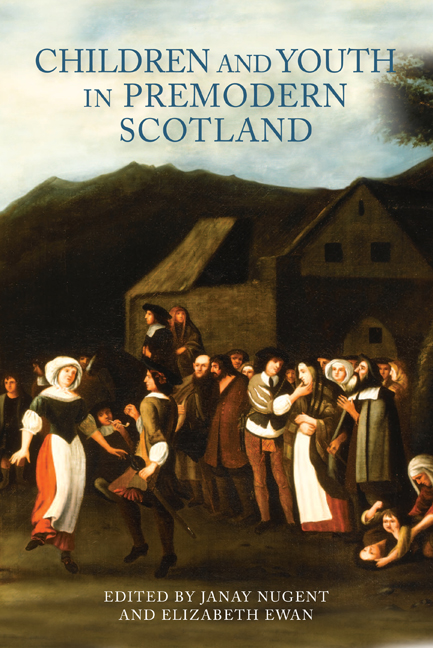Book contents
- Frontmatter
- Dedication
- Contents
- List of Illustrations
- Notes on Contributors
- Acknowledgments
- Abbreviations and Conventions
- Introduction: Adding Age and Generation as a Category of Historical Analysis
- Part I Experiences of Childhood and Youth
- Part II Representations of the Young
- Part III Constructing the Next Generation
- Envoi In Their Own Words: A Mother to Her Son
- Guide to Further Reading
- Index
- St Andrew Studies in Scottish History
1 - A ‘Gret Cradil of Stait’: Growing Up with the Court of James IV
Published online by Cambridge University Press: 11 May 2021
- Frontmatter
- Dedication
- Contents
- List of Illustrations
- Notes on Contributors
- Acknowledgments
- Abbreviations and Conventions
- Introduction: Adding Age and Generation as a Category of Historical Analysis
- Part I Experiences of Childhood and Youth
- Part II Representations of the Young
- Part III Constructing the Next Generation
- Envoi In Their Own Words: A Mother to Her Son
- Guide to Further Reading
- Index
- St Andrew Studies in Scottish History
Summary
On the last day of April 1508, a gift of 3s was presented ‘to ane pure barne that tuke the King be the hand’. We know that the king and the child were in St Andrews, and we know that the king was James IV, king of Scots; we do not know the name, sex or age of the ‘barne’, nor do we know what kind of conversation, if any, happened between the monarch and his young subject. The one fleeting glimpse of this encounter is provided by the Accounts of the Lord High Treasurer of Scotland, in which someone recorded the poor child's holding of the king's hand. In terms of monetary value, the king's gift of 3s was a long way from the lavish expenditures made for members of his own family, such as the sum of over £57 spent on the ‘gret cradil of stait’, a princely cradle covered with cloth of gold and lined with scarlet that was provided for James's infant son in February 1507. Although the king's gift to the child who took his hand was much less extravagant than the ‘gret cradil of stait’, nonetheless, the record relating this moment of human contact between the most powerful person in the kingdom and a poor child remains a rather touching report of a young person's interaction with his or her king.
When records from the court of James IV are considered together, several notable aspects of childhood and youth emerge. The first is a lack of clear chronological boundaries denoted by the words used to describe childhood and adolescence. These words seem able, at least in some cases, to refer to a person of any age from before birth to approximately twenty years old, or older still when the child-related vocabulary associated with servile occupations is taken into account. Another notable aspect of childhood and youth to come to light is that the day-to-day experiences of young people differed significantly according to social status, and that social status was, in turn, influenced by a variety of factors including gender, place of origin, and publicly recognized parentage.
- Type
- Chapter
- Information
- Children and Youth in Premodern Scotland , pp. 15 - 31Publisher: Boydell & BrewerPrint publication year: 2015

